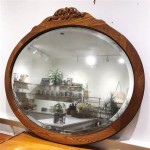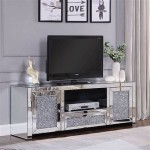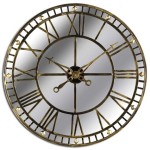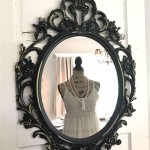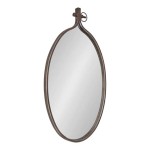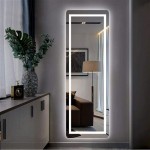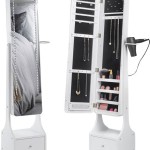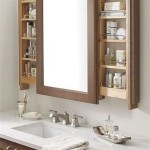Decorating Walls with Mirrors
Mirrors offer significant potential for enhancing interior spaces. Beyond their functional use, they can serve as striking decorative elements, manipulating light and creating illusions of spaciousness. Understanding the various types, sizes, and placement strategies allows homeowners to effectively integrate mirrors into their decor.
One of the primary advantages of using mirrors decoratively is their ability to amplify natural light. Strategically placed mirrors can reflect sunlight deeper into a room, brightening dim corners and creating a more welcoming atmosphere. This is particularly beneficial in spaces with limited natural light sources, such as hallways or rooms with north-facing windows.
Mirrors can also create an illusion of greater space. In smaller rooms or narrow hallways, a well-placed mirror can visually expand the area. Large mirrors, or a grouping of smaller mirrors, on a wall can give the impression of a doubled space, adding depth and dimension to a room. This technique is particularly effective in apartments or homes with compact layouts.
Selecting the right type of mirror is crucial for achieving the desired aesthetic. Frameless mirrors offer a sleek, modern look, blending seamlessly into contemporary interiors. Their minimalist design allows the reflective surface to take center stage, maximizing the light-enhancing and space-expanding effects. Framed mirrors, on the other hand, provide an opportunity to introduce texture, color, and style to a room. Ornate frames can become focal points, complementing existing decor and adding a touch of elegance or rustic charm.
The shape and size of the mirror are also important considerations. Round mirrors can soften the angular lines of furniture and architectural features, while square or rectangular mirrors contribute to a more structured and formal aesthetic. Oversized mirrors create a dramatic statement, acting as a central design element, while smaller mirrors can be grouped together for a textured and layered effect. A gallery wall of varying shapes and sizes can inject personality and visual interest into a space.
Placement is key when decorating with mirrors. Consider the view being reflected. A mirror placed opposite a window will reflect the outdoor scenery, bringing the natural world indoors. Alternatively, reflecting a piece of artwork or an attractive piece of furniture can double its visual impact and create a balanced composition within the room. Avoid placing mirrors opposite unattractive views or cluttered areas, as this will only amplify the undesirable elements.
The height at which a mirror is hung is also important. If the mirror is intended to be used functionally, such as in a hallway or bathroom, it should be hung at a height that allows individuals to comfortably see their reflection. Decorative mirrors, however, can be positioned more flexibly, playing with height and scale to create visual interest. A large mirror hung above a fireplace mantel, for instance, can become a captivating focal point, drawing the eye upwards and enhancing the sense of grandeur.
Different rooms benefit from specific mirror placement strategies. In entryways, a strategically placed mirror can create a welcoming atmosphere and provide a last-minute check before leaving the house. In living rooms, mirrors can amplify light and create a sense of spaciousness, while in dining rooms, they can reflect the glow of candlelight and enhance the ambiance of the space. Bedrooms can benefit from mirrors placed over dressers or vanities for practical use, and bathrooms often incorporate mirrors for both function and aesthetics.
Experimenting with different arrangements and groupings of mirrors can yield interesting results. A cluster of small, uniquely shaped mirrors can create a dynamic and eye-catching display, adding a touch of artistic flair to a wall. Alternatively, a large, statement mirror can serve as the centerpiece of a room, commanding attention and defining the overall aesthetic.
Maintaining the cleanliness of mirrors is essential for maximizing their reflective qualities. Regular dusting and cleaning with a glass cleaner will ensure that mirrors remain sparkling and contribute to the brightness and spaciousness of the room. Fingerprints and smudges can detract from the overall effect, so regular cleaning is paramount for retaining the desired aesthetic.
Incorporating mirrors into interior design is a versatile and cost-effective way to enhance the visual appeal of a space. By carefully considering the type, size, placement, and arrangement of mirrors, one can transform a room, creating an illusion of greater space, amplifying natural light, and adding a touch of style and personality.

How To Decorate With Mirrors Decorating Ideas For

Decorating Walls With Mirrors Professional Tips To Know Decoholic

Decorating Walls With Mirrors Professional Tips To Know Decoholic

10 Ideas For Decorating With Mirrors Stance Studies On The Family Living Room Decor Wall

How To Decorate With Mirrors Ideas Advice Lamps Plus

7 Ways To Decorate With Mirrors Thistlewood Farm

25 Creative Ideas For Decorating With Mirrors

Mirror Decoration For Home 15 Ideas To Decorate With Mirrors

Mirror Décor Ideas How To Decorate With Mirrors

25 Wall Mirror Decorating Ideas That Will Enhance Your Home Decor

